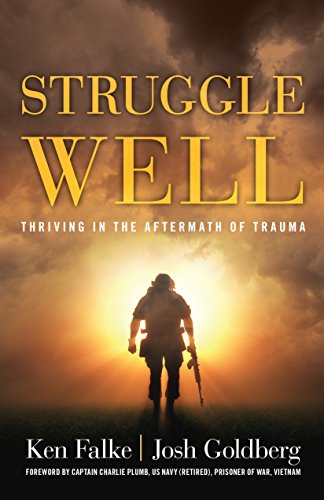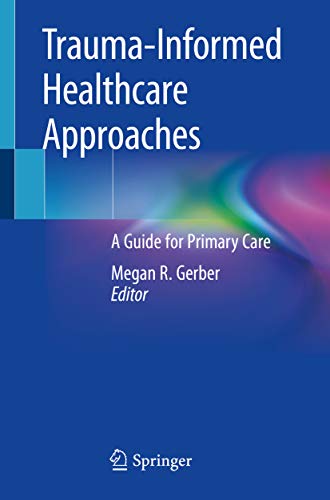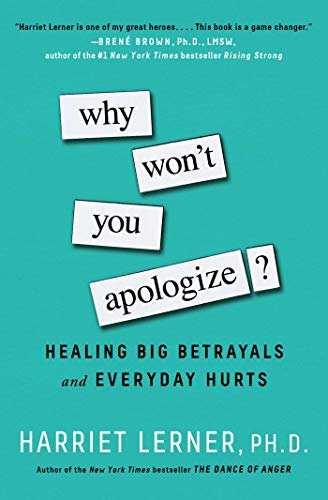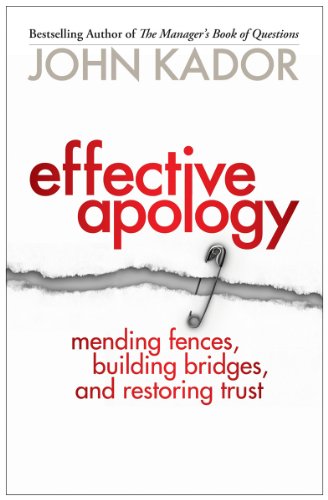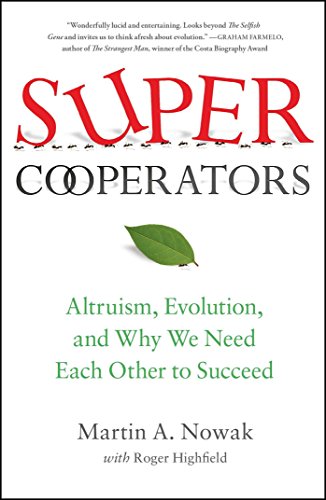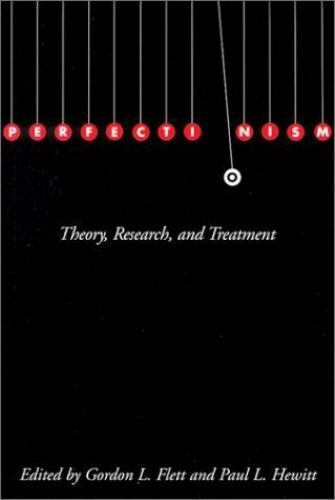
Book Review-Trauma and Recovery: The Aftermath of Violence – From Domestic Abuse to Political Terror
It would be easy to dismiss Trauma and Recovery: The Aftermath of Violence – From Domestic Abuse to Political Terror for a wide variety of traumas, because it is very focused on domestic abuse. There’s a clear focus on this tragic type of trauma – but it’s not the only kind of trauma. It would be an error to dismiss what can be learned from this book so quickly. While the details about the traumas themselves are varied, the challenges that trauma creates are similar regardless of what the actual cause is. After all, trauma is whatever someone says it is – if it’s trauma to them, then it’s trauma. It’s about overwhelming their capacity to cope, and that is at the heart of the challenges it creates.
(Note: This blog post is one of the longest I’ve written. Because of how the content is laid out, I decided against splitting it into multiple posts.)
Gaslighting
Set in a Sherlock Holmes London of the 19th century, we hear tales of ghosts who haunt the living because their stories – their true stories – haven’t been told. They’re prevented from leaving the mortal world completely until the truth can be known. In this quaint picture of life back then with its gritty realities glows lanterns and lamps, which are fed by gas. These gas lamps provided light for the night.
In the 21st century, the term gaslighting has taken on a radically different and more than slightly sinister tone. It originated from the 1944 film, Gaslight, in which a man manipulates his wife into believing she’s insane. Thus, today, instead of pushing back the darkness, the gaslighting that we discuss encourages darkness and doubt. It’s the intentional attempt to make someone believe that something didn’t happen – or it didn’t happen the way they remember it. Gaslighting is a form of emotional abuse, and it leaves its victims questioning their grip on reality and which of their memories they can trust.
One of the common tactics in domestic abuse and control, gaslighting has reached a form of mastery with some individuals – much to the dismay of everyone who believes that it’s not fair to wage psychological warfare on those you supposedly care about.
There are some who would claim that the atrocities – the genocides that have happened didn’t really happen. They deny that the truth is the truth until they’re forced to accept it because of overwhelming or irrefutable evidence. This is what Thomas Gilovich explained in How We Know What Isn’t So. We willingly take in information that agrees with us, but we only accept information that doesn’t agree with us when we have no other choice.
She Was Asking for It
An important cousin to gaslighting is the idea that the victim wanted to be victimized. When stated in these direct terms, it becomes obvious that no one wants to be a victim. It has been used as an excuse for intimate partner violence (IPV), rape, and countless other crimes. Victims don’t “ask for it.” However, perpetrators need to find a way to excuse their inexcusable behaviors, and the only way to do that is to shift the blame from themselves to the victim.
The power to justify our own behavior, to believe what cannot be true, is strong – even when it’s moving in the wrong direction. Luckily, some progress has been made on this front – but blaming the victim is still way too common an occurrence.
Shell Shock
Hysteria was a woman’s disease. The disassociation, problems with sleeping, and flashbacks weren’t for men, particularly not strong men who fought along the front lines of war. That was the thinking until soldiers started coming back from the war who were physically fine but mentally scarred from their time. It wasn’t public knowledge, but as much of 40% of British soldiers returned from the front of World War I were returning due to their mental wounds rather than their physical wounds.
It’s not something you tell the public when you’re putting on the image of the most powerful nation on the planet. You don’t want the public to know there’s something wrong – something seriously wrong. However, it was finally acknowledged that there was something sending boys home that wasn’t something that you could see as they walked down the street. The term became “shell shocked.” Something about the horrors of war had broken something inside their brain.
Eventually, it became accepted that it wasn’t because these men were inferior or because they weren’t good enough. Ultimately, it became truth that these brave men were being afflicted by what they saw or did and their inability to integrate it into their broader views of the world. Unquestionable bravery could be overcome by overwhelming fear.
Protective Factors
Helmets protected men from brain injuries – at least, the kind that came from projectiles. However, there were other protective factors for shell shock. The best protective factor seemed to be the group with whom the person was deployed and became to depend upon for everything. Often, they’re called a band of brothers – or in World War I, it was more often fox-hole brothers. Either way, when people faced unimaginable things with their group, they responded and recovered better. Separated from their group, the situations weren’t as good.
Once the group disbanded – or when they became separated – there was another factor that seemed to form a protective bubble around the person. That bubble was caring. Even small, genuine concern for the person and their story, experiences, and life was often enough to change the trajectory of their life in a positive direction. Simply listening and caring made a real difference.
Incest and Rape – Oh My!
The statistics are crushing. One in three women were sexually abused as children, and one in four women have been raped. It’s a crushing tragedy where our families, streets, and communities aren’t safe. We violate a woman’s body so that she feels as if she has no control – not even of her own body. What’s worse is the complicit relationship that society has and continues to have in this problem. It’s hushed. It’s swept under the rug. It’s not discussed. It’s hidden from sight.
#metoo as a movement was a way for women to finally stand up and be heard about the sexual abuse, intimidation, and exploitation that happened to them. Far too many (one is too many) famous actresses tweeted with the tag. So, too, did women of every station of life, echoing the challenges that society doesn’t want to acknowledge. We cannot collectively traumatize so many of our sisters without causing injury to ourselves.
Trauma Turmoil
It’s an event that cannot be integrated into our understanding of the world. It’s overwhelming. It’s trauma. Or rather, it’s the first definition of trauma. It’s the event that creates the challenge that cannot be immediately processed. However, as I noted in my review of Trauma-Informed Healthcare Approaches, we use the word “trauma” for both the event and the outcome.
When I try to explain post-traumatic stress disorder (PTSD) to others, I say that it’s an inability to process and integrate what someone has seen or done. Most events in our life are integrated into our beliefs about the world in our sleep. We find ways to connect the events of the day to the stories of our lives. In any given day, we’ll use our dreams to make these connections – whether we remember them or not. Trauma doesn’t rise to the level of PTSD in that our current skills are insufficient to integrate it – it’s just that it momentarily overwhelms our capacity to cope and integrate.
It’s possible – and appropriate – to compartmentalize the processing of trauma that happens to us or that we observe, so we can make it through the moment and do the best possible things. First responders can’t address their personal sadness at what happened to a child until they’ve addressed the immediate needs of the child. Nurses who are working in the intensive care unit can’t express their own loss through grief until they’ve completed their duties and attended to the families.
It’s not that delaying processing is bad – it’s bad to never process the event. The problem is that we’re designed to process what happens to us. It’s a part of the learning that keeps us alive. When we try to compartmentalize, cover up, and ignore the traumas that we’ve experienced or seen, it will eventually escape. It may be a trigger, like a song or smell that reopens an old wound – or it can be that the weight and unhappiness of holding back the trauma eventually drains us of our energy.
Fundamental Beliefs
We all carry with us a set of fundamental beliefs about the world. These beliefs inform the way we work and the way we interact with others. We hold countless numbers of these beliefs, from our belief in the general goodness or badness of others to our belief about how traffic will flow. Some of these beliefs are exactly aligned with reality – others, less so.
As humans, we like certainty. We like the idea that A+B=C – however, as I explain in my post Practical Complexity, things aren’t that simple. We simplify reactions that happen 99% of the time into “always,” because the exceptions aren’t that frequent. This leaves us with the problem of having to address what happens when our predictions are wrong.
Mindreading proposes that prediction is the fundamental purpose of consciousness. Many others agree using different language, but the sentiment is the same: predicting others’ behavior – and the outcome of events – has been critical to our survival. That’s why betrayal is so hard to deal with. It’s a failure of our prediction of someone else’s behavior. Unlike jokes, which train us for cognitive missteps, betrayal hurts. (See Trust => Vulnerability =>Intimacy, Revisited for trust and vulnerability. See Inside Jokes for how laughter is the reward for detecting a cognitive misstep. Also see Play for the role of learning and safe environments.) When we’ve been traumatized, we’ve almost certainly got a fundamental belief about the world or ourselves that needs to be adjusted.
Sometimes, that adjustment is small. Sometimes, we need to make a larger change; but because we’re Predictably Irrational and are subject to arbitrary coherence, we don’t adjust enough. Arbitrary coherence means we have a tendency to adjust in smaller increments than the evidence would lead us to.
The real problem is that we have such a small number of interactions that it’s hard to develop good predictions – and make good adjustments. To become really good at forecasting, we need practice, balance, and detachment – none of those things really apply in trauma. (See Superforecasting for more about better forecasting. See Peak for why repeated trauma wouldn’t qualify as practice. Finally, see what we can do to build better predictions with limited data in How to Measure Anything.)
So, we’re left with a bent, broken, or shattered core belief. It could just be the result of the probabilistic nature of reality, or it may mean that we’ve got a fundamental flaw in the way we see the world – but we don’t know which. (See The Halo Effect for more about the probabilistic nature of the world.)
Divine Protection
Our views of the world fall between it being a fundamentally helpful and loving place and a dangerous place filled with people who will only cause you suffering. It is on the fulcrum of this belief that we make decisions about who and when to trust as well as when we need to protect ourselves. This has a subtle but ultimately profound effect on the safety we feel – and therefore how we combat stress. Another way to think about this is that we believe in divine protection or not. If we believe in divine protection, we believe that we are protected from the evils of the world – and when trauma strikes, it shatters this perception.
Not only do we need to address the trauma that befalls us, but we’re left confused as to how our god would have forsaken us. Not only did something bad happen to us, but somehow this is a signal that we’re unloved, unworthy, or irredeemable.
One of the keys to integrating the trauma into our understanding of the world is building a meaning around the trauma that doesn’t include our fault, blame, guilt, unworthiness, or unlovability. Even if the trauma was a result of things we did, that doesn’t mean we’re irredeemable. This is important in our recovery process.
Compromised Intimacy
Because it’s so important, it’s critical that we address the impact of trauma on relationships and intimacy. While rape in any form necessarily creates additional barriers to intimacy at a physical level, all trauma separates us from the rest of humanity – as well as a sense of God or the divine. There are layers to this aspect of trauma.
First, we need to recognize that intimacy is the result of vulnerability, which is built on the feelings of safety that comes when we trust others. Trauma, by causing us to question who we can trust and whether we’re safe, directly blocks our ability to be intimate with others. To be clear, intimacy in this context is the state of complete trust, not necessarily any kind of physical relationship. (See Trust => Vulnerability => Intimacy, Revisited to better understand this flow.)
Second, we need to address hope. Hope, as Rick Snyder explains in The Psychology of Hope, is a cognitive framework built on willpower and waypower. Willpower is in common understanding today, but Roy Baumeister’s book Willpower has a great deal more about it. (Grit is also an excellent call to persist while explaining willpower.) Waypower is simply knowing “how” something is going to happen. Ultimately, this breaks down into those things we know how to do ourselves or that we trust can or will happen through others. The second part, what can happen through others, is where it gets sticky. If our fundamental belief of the world switches negative – even for a moment—we can break our fundamental sense of hope and thereby send ourselves into a depressive spiral – where we don’t feel like connecting with others or being intimate.
This is why the intervention of connections, community, and professionals to create a safe, caring space is so important. With it, it’s possible to believe that the entire world isn’t bad – and therefore the resources necessary to survive the trauma maybe forthcoming. These simple connections can be immensely powerful.
No Intervention
Often, the challenge isn’t just the trauma but the lack of any protection from it. Imagine the family of Kitty (Catherine) Genovese. She was raped and killed in Queens, New York in 1964. The troubling aspect was that 38 neighbors did nothing during the 35 minutes of her screams before she was silenced by her killer. (See Blink, Influence, People in Crisis, and The Lucifer Effect for more on the bystander effect, which is believed to drive the inaction.) Imagine Kitty’s family and the trauma they faced as they learned of these details and came to grips with a world where none of her neighbors would even phone the police.
It changes the world that they live in. Not only must they accept the tragic world where rapists and murderers could victimize Kitty, but also they have to accept that the rest of the population might not be as good as they believed. Albert Bandura in Moral Disengagement examines how we can disconnect people from their moral moorings and set them adrift to behave in ways that defy explanation – including failing to protect members of their community.
Sometimes, the degree of anger and frustration is greater with the people who stood by and did nothing than the people who inflicted the trauma on the person. It’s a greater pain to know that people wouldn’t help.
Competition and Overreactions
Almost everyone has the family member that they know not to share their trauma with. It will end in one of two ways: a competition for whose trauma is the most traumatic, or an overreaction to the trauma that happened to you. Somehow, they’ll act as if the trauma happened to them – and their trauma is more important than yours. This is particularly complicated in the trauma from a death, because that death will impact almost everyone in the family, and some people will feel the impact more strongly.
Let’s dispatch the problem of competition first. If someone is trying to compete with you about whose trauma is worse, they’re necessarily invalidating the degree to which you feel the trauma and, in some ways, are gaslighting you to say, “It wasn’t that bad.” Sometimes, you can shut down the competition by simply stating, “I agree, your trauma was bad, it might even be worse, but we’re talking about my trauma right now.” While this won’t shut down every competition, if you can have the wherewithal to respond by acknowledging their trauma and indicating that it’s not what you’re discussing right now, you may be able to get them to stop.
It’s important to realize that, if they’re trying to compete with you about the trauma you’re describing, they’re likely not a safe person (see Safe People), or they’ve not been able to fully process their trauma and feel as if no one is listening. That’s why it’s important, when you’re able, to make an attempt to listen to their trauma. It doesn’t need to be – and perhaps should not be – while you’re sharing your own trauma.
The other end of the spectrum is the overreactor. It’s not that they’re competing with you about how their trauma is more important, impactful, or worthy of attention. They’re too busy reacting to their trauma of the trauma that you faced to be present for how it impacted you. They make your trauma about them and how it changes their life. You call to tell your parents about your drunk driving conviction, and they begin to explain how it will impact their social relationships with their friends.
Many people have learned that there are some people – frequently family – who are not safe enough to discuss traumatic events with.
Separate
As humans, we need connections to other people. (See The Dance of Connection for more.) Because we need connection when we feel isolated and alone, we’re vulnerable. It doesn’t matter whether the separation is real or not. What matters is that you believe you’re alone. When trauma rips through your life but doesn’t feel like it has ripped through your friends and acquaintances, you feel separate. Consider the incest victim who tells no one and is isolated by feeling different. The statistics say that it’s likely that others in their peer group have faced the same tragic event – but none of them feel safe enough to talk, and thus they’re all alone.
Conversely, their psychological ego protection mechanisms may seek to elevate the person who doesn’t talk as superior to those who complain and whine about their trauma. Yet these defenses are necessarily incomplete. On the one hand, they feel better than others; in other ways, they feel inferior. They oscillate between too good and too bad but always feel separate, disconnected, and alone.
Community is such a powerful force. We see the power of community in Robert Putnam’s Bowling Alone and Our Kids. We see the power of community in twelve-step groups. (For more, see Why and How 12-Step Groups Work.) We cannot expect to heal from trauma if we feel like we’re the only ones.
The Truly Evil Is Us
One of the more disturbing aspects of trying to recover from trauma is when we realize that the greatest atrocities in human history were sometimes aided by normal people. Adolf Eichmann was an important part of the machine that committed genocide of Jews during World War II. He was also judged to be relatively normal – not a depraved monster that everyone wanted to believe he was. The questions arose about how normal men and women could do such vile things and remain “normal.” It led to experiments like Stanley Milgram’s simulated shock experiments that had a majority of subjects believing that they were shocking other subjects with dangerous levels of current in the name of science. It led to Phillip Zimbardo’s much-reported, aborted Stanford Prison Experiment (SPE). Zimbardo reports the story of SPE himself in The Lucifer Effect, and Bandura decomposes how the processes work in Moral Disengagement.
The net of all this work is that the unspeakable things that some men have done are things that any of us could or would do given the right circumstances. It harkens back to Lewin and his formula, which states that behavior is a function of both person and environment. That is, we can’t predict behavior absent from an environment. (See A Dynamic Theory of Personality for Lewin’s work.) We see this environmental feedback in the extreme views that some groups develop. (See Going to Extremes for more.)
Control via Threat
In Chasing the Scream and Dreamland, we discover the fear that can be created by random, capricious acts of violence. Cartels don’t keep people compliant by a strictly regimented form of consequences. Instead, they randomly make examples of people to instill fear that any disloyalty may be repaid with torture and death – not just of you but also of anyone you love. As if torn from a page of the drug cartel playbook, often people are controlled with threats that make them fear for their own lives and the lives of their loved ones.
If you leave the person who is controlling and abusing you, they may find you and kill you and your children – or they may just as likely go kill your parents. At least, that’s the story they tell. It drives fear so deep into a person that it’s hard to shake. The statistics aren’t much help here. Roughly 40-50% of the murders of female adults are classified as IPV. That is, the person who killed them was a spouse, partner, or ex-partner.
The randomness and the degree to which the partner seems to be willing to take their anger, rage, and vengeance makes it difficult for a woman to decide to break away. Even then, there are far too many cases of the controlling partner finding – and returning or murdering – the one who tried to escape.
Disassociation and Altered Perception
It’s common for trauma patients to start to disassociate with their situation. It helps to believe that whatever is happening is happening to someone else. While it’s common, it’s not very adaptive post-trauma. Teaching people to remain safe and connected to their experiences is an important part of the recovery process. Detecting disassociation is a skill for both the person themselves – and for those who care about them.
The most common way that people report disassociation is that they begin to look upon the scene not from their vantage point but instead as if they were looking at it from above or from another place in the room. This is often accompanied by a numbness.
However, this isn’t the only way to detect disassociation. The trance-like state that disassociation induces also allows for things that normally cannot occur. The first is that you can accept and believe two contradictory ideas. It’s possible – for instance – to believe that the Sun rises in the East and also that the Sun rises in the West. If evaluated together, one is obviously false, but the person who is disassociating never seems to find themselves at this particular crossroads.
Additionally, disassociated people tend to have a broadly based altered perception. This can manifest itself in a variety of ways – like seeing the situation from another vantage point, as just explained, or by perceiving events radically differently than they could have been.
Consider an innocuous situation where one person feels animosity towards a second. This person may believe that they were snubbed by the other. They made a step forward, made eye contact and then the second person dismissed them. However, the second party has no recollection of this. This situation took place under a high-resolution camera during the daylight where what transpired was captured beautifully. There was no motion towards the second person, no eye contact, and no snubbing. Without video evidence, the first person would have held fast to their beliefs. (This is a real situation.)
The ways that the perception can be distorted are almost limitless, some able to manifest in the moment and others rewriting memory to accomplish the distortion. (See Mistakes Were Made (But Not by Me) for more about memory rewriting.)
Keeping Secrets from Yourself
Because traumatized people would prefer to believe that the traumatic events never happened, they’ll sometimes try to pretend that it didn’t. White Bears and Other Unwanted Thoughts clearly demonstrates that this cannot be done in the broadest sense. If you can pull this off in any limited sense, it may provide temporary relief – but ultimately the secrets will become exposed, and you’ll have to deal with them. While it’s not appropriate to confront every challenge immediately, it should be recognized that permanent secrets don’t really work.
Finding Meaning – Even if It’s Wrong
To power our predictions, we must develop theories of how the world works. We must find ways to explain what’s happening to us and build models that work with the experiences we have. (For more on the model building, see Gary Klein’s excellent book, Sources of Power.) As a child who experiences trauma inflicted upon you by your parents, you effectively have two basic meanings that you can take. First, that your parents – who gave you life and have protected you up to this point – are really evil and are doing things to harm you. Alternatively, you can believe that something that you’ve done is bad, and if you simply correct the bad thing that you’re doing, all will be well.
Too often, innocent children pick the second option, but there is a rationality to it. In the face of evil parents, a child is defenseless. There’s nothing they can do to stop the infliction of additional trauma. They’re helpless. (For more on helplessness, see The Hope Circuit.) Conversely, if it’s the child that can change their behavior and get different results, they’re holding onto at least a little bit of power and hope. So, while the second approach threatens their self-esteem, it also empowers them to make changes.
Obviously, the problem is uniformly with the parents as no innocent child deserves to be traumatized. However, we see this pattern happening in other situations as well. Rather than accepting the relatively uncharitable view of others, we inflict it upon ourselves because we can – we believe – change our behaviors. We try to be perfect, because that will stop the trauma. However, no one can be perfect. (See Perfectionism for more on trying to be perfect.)
Rational Arguments Don’t Matter
Sometimes, it’s too hard to see someone else’s point of view. If we accept Jonathan Haidt’s Rider-Elephant-Path model that says that our rationality is a tiny rider on top of a large emotional elephant, it becomes easier to understand how, when our emotions are out of whack, no amount of conversation with the rational rider is going to matter. (See Switch and The Happiness Hypothesis for more on the model.) This is one of the very odd effects that happens. In Going to Extremes, the process of moving towards extreme positions is laid out – including the transition between “can I” and “must I” accept the other person’s arguments.
At the most basic levels, the way we feel is simply the way we feel – reality be damned. That’s why so much of the best work in psychology has been about gaining perspective, making it easier to look at different perspectives, and taking the most helpful and generally most correct one.
The answer is sometimes to allow the elephant to settle down and give the rider a chance – but only if the person doesn’t have reinforcing messages continuing to drive their emotional response.
Body Containing Trauma
What happens when you can’t find a medical reason for a condition that’s facing someone? The answer is you either keep looking or you dismiss it as not real. However, over the past few decades, as we’ve advanced diagnostic tools, we’ve also improved our understanding of the relationship between the way we think and the way our body responds. We see this in The Body Keeps the Score as well as Why Zebras Don’t Get Ulcers. The degree to which we’re in stress and fear has a profound impact on the functioning of our immune system, and many of the diseases we face today are autoimmune diseases – that is, the immune system mistakenly attacking the body itself.
There are ways of better understanding stress and fear, including the ideas shared in Richard Lazarus’ Emotion & Adaptation, but whether you understand what’s happening or not doesn’t change the physiological impacts of long-term sustained stress. In short, the body is damaged by our inability to process and resolve trauma.
Empowerment
If you had to pick a single word to combat trauma, it would probably be empowerment. It’s restoring to the person a sense of self-agency that they lost through the trauma. Whether it was a rape or a natural disaster, the trauma disrupts our ideal that we can protect ourselves and our bodies. By empowering people to take back control of their bodies and their situations, we enable them to process and resolve the trauma.
In clinical settings, this is often about describing things before they’re done, getting micro consents, and offering choices. They’re simple, small ways that people are being given back control of their lives – control they often believe they lost.
In Opening Up, James Pennebaker explains research he did shortly after the Mt. St. Helens eruption in 1980. Two towns were selected: Yakima and Longview. The recovery of the two towns couldn’t have been any more different. Yakima was covered in over two inches of ash and sustained damage, but the community came together and ultimately told a story of empowerment, community, resilience – and opportunity to experience a once-in-a-lifetime event. Longview, which received less than a half-inch of ash, kept a watchful eye on the mountain that they no longer trusted. Ultimately, with time, the two communities returned to a similar sense of the event – but the difference may have been the ability of Yakima to see how they could make a difference and clean up the mess that the volcano had made of their town.
It’s Not Fair – and It’s Not Right
Life ain’t fair. That’s not very helpful, particularly after a trauma. Automobile accidents where the other person is at fault are largely random. Very little of your driving ability comes into the picture when someone else is at fault. Is it “fair” that you were the one in the accident? Not by the definitions that people use for fair. Of course, it’s equally not fair that someone wins the lottery, but you don’t hear the winner complaining. In fairness, we believe that people should get exactly what they deserve, but when you live in a world of probabilities and chances, this just isn’t the case at an individual level. The truth is that trauma isn’t fair. Life isn’t fair. There are ways to influence the odds of trauma, but even if you take every precaution, it’s still possible to be the unwilling recipient of trauma.
Trauma also isn’t right. It “shouldn’t” have happened to someone. Again, life doesn’t dole out trauma like some of karma. It happens to good people, and it doesn’t make them any less good. Trauma is sometimes the direct result of risks someone took – but mostly it’s just dumb bad luck.
Never Back to Normal
Getting back to normal after a trauma isn’t a thing. A new normal is defined, and that is the way things will be. Heracles said that a man never steps into a river twice – he’s not the same man, and it’s not the same river. The idea that we’ll get back to the “normal” of even a minute ago is a fallacy. However, never is this so obvious as after a trauma, when your foundational beliefs have been questioned. Once you’ve redefined the way you see the world, even the same places and situations are different, because how you process it and what you bring are different.
When someone is struggling with a traumatic experience, the goal should be to define a positive new normal – rather than trying to get back to a place that no longer exists.
Defining the New You
One of the activities that everyone must do post-traumatic event is to redecide who they’re going to be. This can be done consciously or unconsciously, but we must reevaluate who we are in the context of the new perspectives and information. We must decide the kind of person we’re going to be in relation to the world that seems to have changed. Are we going to let the trauma define us as a victim – or are we going to rise above the trauma and define ourselves by how we recover and continue rather than by what has happened to us?
Trauma is an inflection point. It punctuates our life’s story with an exclamation point, and we can choose to use that energy to push us forward – or we can avoid it and hunker down. Or we can decide to hunker down and recover before venturing on again, which is probably the wisest choice of all.
Courage
It takes courage to move past fear and into the new world. Most people think that courageous people move forward without fear – but that’s not truth. Courageous people move forward in fear with the hope they can make things better. (See Find Your Courage for more.) Courage brings with it a risk that things will get worse and a hope that it will get better.
When we confront despair, we make ourselves vulnerable to potential hopelessness – and temporary increased risk of suicide. However, it’s only by confronting our fears and the despair they can bring that we can neutralize their power over us and move forward.
We must find ways to simultaneously acknowledge the fear and move forward anyway.
Return to Pooh Corner
There’s a song by Kenny Logins titled “Return to Pooh Corner,” which is about him remembering his childhood through his child’s eyes. Sometimes, we move forward by moving backwards. Sometimes, we gather deeper understanding as we move back to the starting point and repeat something we’ve done before. Often, addicts “fall off the wagon” and are crushed that they can’t beat the alcohol once and for all. However, what they fail to realize is that most addicts relapse. Our journey to mental fitness isn’t a straight line any more than our physical health is a straight line.
This doesn’t, however, stop the guilt and shame. Nor can it silence the voice that wonders if you’re one of the “incurable” ones. Trauma has the same dynamics. It can be that, after initial treatment, things seem to be going fine until something comes up. Some trigger trips you up and makes it impossible to get back into a working rhythm. In these cases, there’s no shame in returning to the place that you were helped – even if it feels as if there should be. We all work through traumas only to have them resurface years in the future.
Going to Groups
Trauma and Recovery exposes a clearly articulated model of groups that has three stages – and a pre-stage where group work on trauma may not be appropriate. The first type of group is open and welcoming. It is designed to reestablish a sense of safety. The second type of group is a remembrance and mourning group that has an established time limit; it helps people work through the experience of trauma by progressively increasing the degree to which affect (feeling) is connected to and processed for the event. The final group type is reconnection, which focuses on rebuilding the sense of connection and community that trauma necessarily interrupts.
While the flow and definitions are solid, the more important part of the model is the recognition that there is no one kind of group that fits everyone’s needs. There’s a lifecycle to grief. (See Finding Meaning and The Grief Recovery Handbook for more.) Different group forms work for different people in different places on their trauma recovery journey.
In the end, it’s important to realize that it’s not just the trauma that we should be focusing on. We need to focus equally on Trauma and Recovery.

